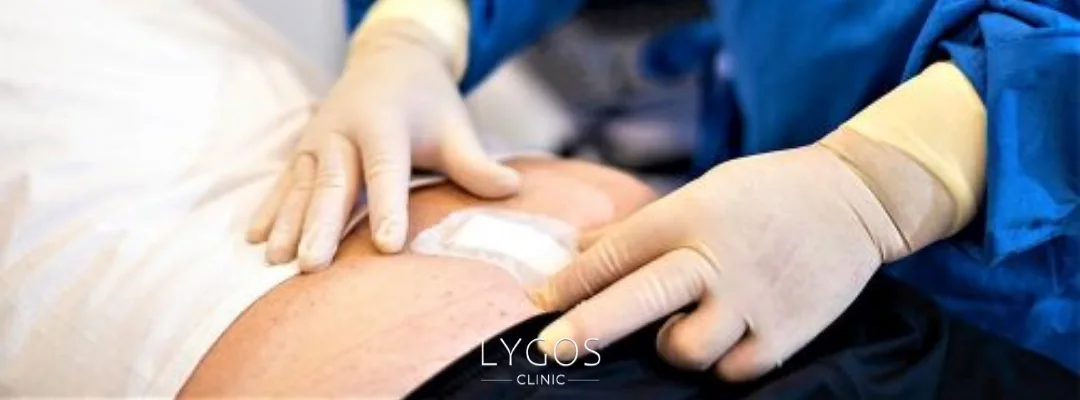What Is Pilonidal Sinus? | How Is Pilonidal Sinus Treated?

Chose Your Topic
What Is Pilonidal Sinus? How Is Pilonidal Sinus Treated?
“What is pilonidal sinus?” is a common question asked by people experiencing pain, swelling, or discharge in the tailbone area. Medically known as pilonidal sinus disease, this condition occurs when hairs penetrate beneath the skin and the body treats them as foreign bodies, leading to inflammation and infection. So, truly, what is pilonidal sinus and how is it treated? Let’s explore in detail.

What Is Pilonidal Sinus?
Let’s start with the basics: what is pilonidal sinus? Pilonidal sinus is a condition where loose hairs embed themselves under the skin, especially in the coccyx (tailbone) area, and form an inflamed, infected cavity or sinus. Over time, this sinus can become painful and may lead to abscesses. For those asking “what is pilonidal sinus?”, this explanation covers its core nature.
It is most commonly seen in young men, especially those with sedentary lifestyles or who spend long hours sitting. The question “what is pilonidal sinus?” is often asked by office workers, drivers, and students who are in the risk group.
Why Does Pilonidal Sinus Occur?
Before discussing the causes, the question again arises: what is pilonidal sinus and why does it happen? Simply put, it begins when fallen body hair embeds into the skin and causes infection, usually triggered by these factors:
- Excess body hair: Especially in the lower back
- Sweating: Softens skin and allows hair to penetrate
- Prolonged sitting: Increases pressure and friction
- Tight clothing: Triggers friction and sweating
- Poor hygiene: Raises infection risk
So when people ask “what is pilonidal sinus?”, the answer includes both the definition and the causes.
What Are the Symptoms of Pilonidal Sinus?
Many begin researching “what is pilonidal sinus?” after noticing symptoms. These signs can gradually become worse and affect daily life:
- Pain near the tailbone
- Swelling or redness
- Foul-smelling discharge
- Formation of an abscess
- Discomfort while sitting
If you are experiencing any of these, and asking “what is pilonidal sinus?”, there’s a strong chance that you may have this condition.

How Is Pilonidal Sinus Treated?
After “what is pilonidal sinus?,” the next most common question is about its treatment. Treatment varies based on the stage of the condition:
- Medication: Antibiotics are often prescribed in early stages, especially if there's mild infection. However, they do not eliminate the sinus itself. So if you're asking “what is pilonidal sinus?”, know that medication is not a permanent solution.
- Draining the Abscess: If an abscess forms, a minor surgical procedure may be done to drain it. This relieves symptoms, but the sinus remains. Again, this is a temporary solution to the question “what is pilonidal sinus?”.
- Hygiene: Keeping the area clean and hair-free helps prevent recurrence. However, full recovery usually requires surgery.
Pilonidal Sinus Surgery
In most cases, pilonidal sinus must be treated surgically for a lasting solution. So when people ask “what is pilonidal sinus?”, surgery is often the ultimate answer.
- Open Surgery: The sinus tract is removed and the wound is left open to heal naturally. This method has a low recurrence rate but longer recovery time.
- Closed Surgery: The wound is stitched closed after removing the sinus. This method heals faster, but there’s a slightly higher risk of recurrence.
- Laser Surgery: A modern, minimally invasive technique where the sinus is cleaned without an incision. It’s ideal for those wondering “what is pilonidal sinus?” and seeking a non-invasive approach.

How to Prevent Pilonidal Sinus?
After treatment, patients often ask: what is pilonidal sinus and how do I prevent it from coming back? Here are some key prevention tips:
- Keep the area clean and dry
- Remove excess body hair regularly
- Avoid long periods of sitting
- Wear loose, breathable clothing
- Take regular showers, especially after sweating
Following these can keep the question “what is pilonidal sinus?” from resurfacing in your life.
In conclusion, the question “what is pilonidal sinus?” goes beyond just a definition—it represents a potentially recurring issue that can significantly affect comfort and health. Early diagnosis and proper treatment are essential. Most importantly, hygiene and preventive measures are key to avoiding recurrence. If you’re asking “what is pilonidal sinus?”, don’t hesitate to consult a healthcare provider.
What Is Pilonidal Sinus? Frequently Asked Questions (FAQ)
Pilonidal sinus usually presents with swelling, pain, foul-smelling discharge, and redness in the tailbone area. Hairs that penetrate beneath the skin cause infection, which eventually leads to the formation of a sinus tract. It starts with mild pain in the early stages and can develop into an abscess if untreated.
No, pilonidal sinus generally does not heal on its own. While antibiotics may provide temporary relief, surgical intervention is usually required for a permanent solution. If left untreated, it can lead to recurring abscesses and more serious infections.
The difficulty of pilonidal sinus surgery depends on the stage of the condition. Various techniques are available, including open, closed, and laser procedures. It is typically performed under local or general anesthesia. Recovery time can vary from 1 to 3 weeks, and post-operative care is crucial for healing.
Yes, pilonidal sinus can recur, especially if proper hygiene is not maintained or risk factors persist. After surgery, it’s essential to keep the area hair-free, dry, and clean, and to minimize long periods of sitting.
Pilonidal sinus is most commonly seen in men aged 15–35. Those who sit for extended periods (like drivers or office workers), sweat excessively, or have excessive body hair are at higher risk.


